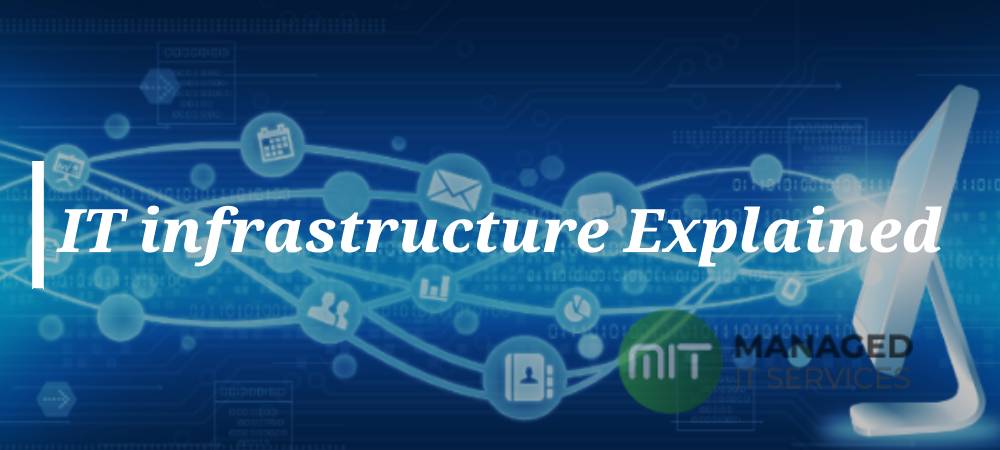IT infrastructure is devised of different components and is supposed to be interrelated to have a consistent and systematic organizational IT infrastructure. Nowadays, organizations around the globe are dependent on technology to keep the business up and running smoothly. An efficient IT infrastructure network ensures high productivity, better communication, and superior efficiency.
However, if there is any disruption, it’s most likely to affect the other business operations since all are coherent. Therefore, you need a good IT infrastructure that does not lead to downtime, ensures the system is optimal and detects any problems beforehand.
ManagedITServices (MITS) is a leading managed IT service provider in Pakistan. If your business requires IT infrastructure services in Pakistan or any other IT service, contact us. We employ skilled and experienced IT professionals to ensure our work quality is unmatched.
What is IT Infrastructure?
Now that we know the importance of a good IT infrastructure and its impact on the business, let’s understand what IT infrastructure means. IT infrastructure refers to a group of network systems, software, hardware, and framework that allows the distribution of IT services to various other units of an organization and assists in creating an online presence.
Types of IT infrastructure
The two basic categories of IT infrastructure deployed in the organizations are:
Traditional Infrastructure
The traditional IT infrastructure consists of software and hardware components, including data centres, servers, personal computers, and enterprise software solutions. This IT infrastructure is used for a single business entity and is set up on premises that enable the employees to access the needed applications and information. This IT infrastructure is more costly than others and requires additional space and power. Therefore, you need to have adequate financial resources if you want to opt for this conventional infrastructure. This infrastructure system needs to be updated frequently to increase the storage data and other facilities to expand it for other users.
Cloud Infrastructure
Cloud IT infrastructures are the resources and elements needed for cloud computing. The main difference between a traditional and cloud infrastructure is that the latter allows users to access the infrastructure through the internet and permits the organizations to use the IT infrastructure without having to go through the process of on-premises installation. Unlike traditional IT infrastructure, there is no need for traditional-like physical systems in a cloud infrastructure. The cloud service provider handles the physical infrastructure.
Components of IT infrastructure
Hardware
Hardware refers to the physical component of the IT infrastructure, which consists of all the components needed to permit the devices and other machinery that create the infrastructure to work. It includes
- Servers
- Routers
- Personal Computers
- Switches
- Mobile devices
- Hubs
- Cabling
Software
Software consists of the organization’s every application used either for the company’s own usage or for providing it to the customers as a service. It includes:
- Web Servers
- Enterprise Resource Planning (ERP)
- Customer Relationship Management (CRM)
- Productivity Applications
- Operating Systems
Network
The network includes software and hardware to assist the company’s overall technology territory. To better understand, let’s take the example of printers. PCs are connected to printers via wires, and a wireless connection allows them to function and perform their duties. This connection is called networking.
Conclusion
With the right IT infrastructure, your business can achieve and retain a competitive advantage over its competitors. However, you need to invest continuously in your IT infrastructure to ensure that it meets modern requirements.




